
Reading the Animal in the Literature of the British Raj(英语原版 精装本)阅读英国统治文学中的动物
¥ 317.9 ¥ 105 八五品
仅1件
天津河西
认证卖家担保交易快速发货售后保障
作者Shefali Rajamannar(author)and James R. Kincaid(foreword)
出版社Palgrave Macmillan
ISBN9780230114494
出版时间2012
版次1 edition
印刷时间2012
装帧精装
页数232页
定价105元
货号H540
上书时间2017-07-20
- 在售商品 暂无
- 平均发货时间 3小时
- 好评率 暂无
- 最新上架
商品详情
- 品相描述:八五品
- 商品描述
-
本书原定价105.00美元,净重440克,本书外封壳安装颠倒,书页反向装订(类似中文古典图书),请仔细参看书影,内容完整无缺,非馆藏。【图书分类:英国文学之文学评论和研究】Reading the Animal in the Literature of the British Raj explores representations of animals during British rule in India--the tigers, elephants, boars, furs, and feathers that sometimes all but obscured the human beneath and behind them, and that were integral in the creation and maintenance of the hierarchies of colonialism. The book exists on two levels: one offers a sophisticated view of how power and oppression work within constellations of species, race, class, gender, and nationhood, and the other is a deeply suggestive meditation on our humanness and how we locate it within a spectrum of relations. Drawing on a range of texts including hunting narratives, stories, poetry, novels, photographs, journals, paintings, and cartoons, the argument builds with a lucid and beautifully unobtrusive feel for the telling example.
232 pages; 15 pages illustrations.
Discusses the production and circulation of animal narratives in colonial India in order to investigate the constructs of animals played into a variety of forms of othering that took place in England during its imperial venture.
Contents:
Foreword * List of Illustrations * Glossary * Introduction: Why the Animal? Or, Can the Subaltern Roar, and Other Risky Questions. Some Theoretical Frameworks * Animals, Children, and Street Urchins * Herein the British Nimrod May View a New and Arduous Species of the Chase: Hunting narratives 1757–1857 * Our Rightful Claim to Superiority as a Dominant Race: Hunting narratives 1857–1947 * Animals, Humans, and Natural Laws: Kipling and Forster * Making Kingdoms Out of Beasts * Notes * Illustration Credits * Select Bibliography * Index
Review:
"...a patient, scholarly and intellectually compelling account of the function of representations of animals in colonial India...a nicely gauged combination of canonical and more obscure texts....Although there is plenty of close textual analysis here to satisfy literary scholars, Rajamannar's examination of the illustrations in these sources is particularly enlightening as she explores with subtlety and depth the cultural mechanisms for the 'creation of [the] hierarchies and strategic alliances that form the very bedrock of imperialism'" --John Miller in the Journal of Victorian Culture.
"...[an] insightful study." -- The Year's Work in English Studies, Oxford Journals, Oxford University Press.
'This is a must read for scholars of nineteenth-century studies, postcolonial theory, history, and animal studies. Reading the Animal in the Literature of the British Raj is a fascinating, nuanced study that puts animals back into empire and empire studies. Provocatively arguing that the animal is the ultimate subaltern, Rajamannar demonstrates the imagined, physical, and political power of the hunt and the hunted through the lens of guns and cameras. At the same time, within a rich landscape of theory and history, animals themselves are treated as subjects who deserve attention.'-Teresa Mangum, associate professor of English, University of Iowa, director, Obermann Center for Advanced Studies.
'Postcolonial studies have been vitally concerned with the constitution of human hierarchies of race and domination. Few, however, have paused to ask how those hierarchies extend to the hierarchization of species. What is the role of the animals so ubiquitous in imperial representations of the colony? Shefali Rajamannar answers this question with subtlety and telling archival detail, capturing in sharp and illuminating readings the ambiguity as well as the orientalist function of animals in the representation of the Raj. For anyone who has ever experienced the ambivalent effect, at once oppressive and playful, of reading Kipling's Jungle Books, Rajamannar's study will be a revelation.' - David Lloyd, professor of English and Comparative Literature, University of Southern California.
'Energizes posthumanist literary and cultural criticism in a truly original and important way. It reminds us that the British Empire was a powerful - and often violent - attempt to shape the environment after its own vision. It was a vision, Rajamannar argues convincingly, where the respective ideologies of social and ecological domination crucially nourished each other with symbolic and material legitimacy.' - Saikat Majumdar, assistant professor of English, Stanford University.
'Maybe it's the times we live in, but who wouldn't want to read about tigers and elephants, howdahs and hookahs, princes and pukka-sahibs? I don't know of other books in any academic field - or jungle - that so persuasively invite us to look again at the increasingly exotic British men and women of this period. Reading the Animal in the Literature of the British Raj is a fascinating and beautifully written description of the work that representations of animals did for the British in the time of the Raj . . . The author makes excellent use of an impressive array of source materials to support her arguments. Her close readings of these narratives, photographs, and illustrations are exciting and original, and she provides just the right amount of historical and cultural context.' - Richard Tithecott, author of Of Men and Monsters: Jeffrey Dahmer and the Construction of the Serial Killer
'No book I know handles this task with more acuity and lucidity than Shefali Rajamannar's Reading the Animal in the Literature of the British Raj. Dr. Rajamannar keeps her focus keenly on her subject, the way the British Raj imagined and imposed itself by way of distinguishing itself from nature and the animal, and how that othering worked in parallel ways in matters of gender, age, class, and finally, in the outwardly confident (though not-so-secretly anxious) manufacturing of a dominant race. Too rich to summarize here, the argument builds patiently and with a beautifully unintrusive feel for the telling example, always presented quietly and serenely, even when the implications are disturbing, heartbreaking. Dr. Rajamannar knows how to use understatement, keep herself out of the way of her sophisticated and original argument. The book exists, as it were, on two levels: one offers a shattering and new view of the construction on power and oppression by way of the othering performed on class, race, gender, nationhood, and species in the Raj and the other is a deeply suggestive meditation on our humanness, how we locate it in a spectrum of relations and not as an isolated given, much less as a stable pinnacle of a pyramid: how can we see ourselves fluidly and relationally in ways that do not induce panic and slaughter and may, some day, allow even some play, some love.' - James Kincaid, Aerol Arnold Professor of English, University of Southern California.
From the Back Cover:
'Maybe it's the times we live in, but who wouldn't want to read about tigers and elephants, howdahs and hookahs, princes and pukka-sahibs? I don't know of other books in any academic field--or jungle--that so persuasively invite us to look again at the increasingly exotic British men and women of this period.'-Richard Tithecott, author of Of Men and Monsters.
'... a must read for scholars of nineteenth-century studies, postcolonial theory, history, and animal studies....a fascinating, nuanced study that puts animals back into empire and empire studies.'-Teresa Mangum, associate professor of English, University of Iowa
'. . . [uses] subtlety and telling archival detail, capturing in sharp and illuminating readings the ambiguity as well as the orientalist function of animals in the representation of the Raj.'-David Lloyd, professor of English and Comparative Literature, University of Southern California.
'Energizes posthumanist literary and cultural criticism in a truly original and important way.'-Saikat Majumdar, assistant professor of English, Stanford University.
About the Author:
Shefali Rajamannar taught British literature and Modern European Drama at the Department of English of Lady Shri Ram College, University of Delhi (India's top women's college and one of its top four liberal arts colleges) for a decade. Dr. Rajamannar currently teaches Advanced Writing in the Arts and Humanities and Social Sciences at the University of Southern California, where she was formerly Associate Director of the Writing Program.
Web pages:
dornsife.usc.edu/cf/faculty-and-staff/faculty.cfm?pid=1007271
us.macmillan.com/authordetails.aspx?authorname=shefalirajamannar
— 没有更多了 —











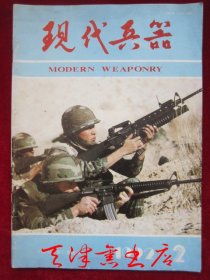
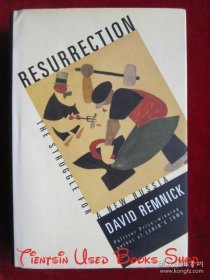



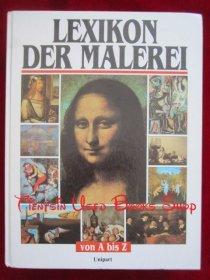
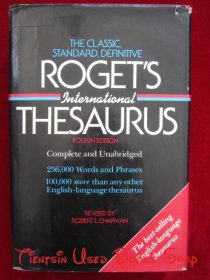
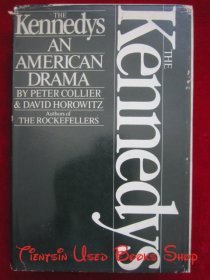

以下为对购买帮助不大的评价